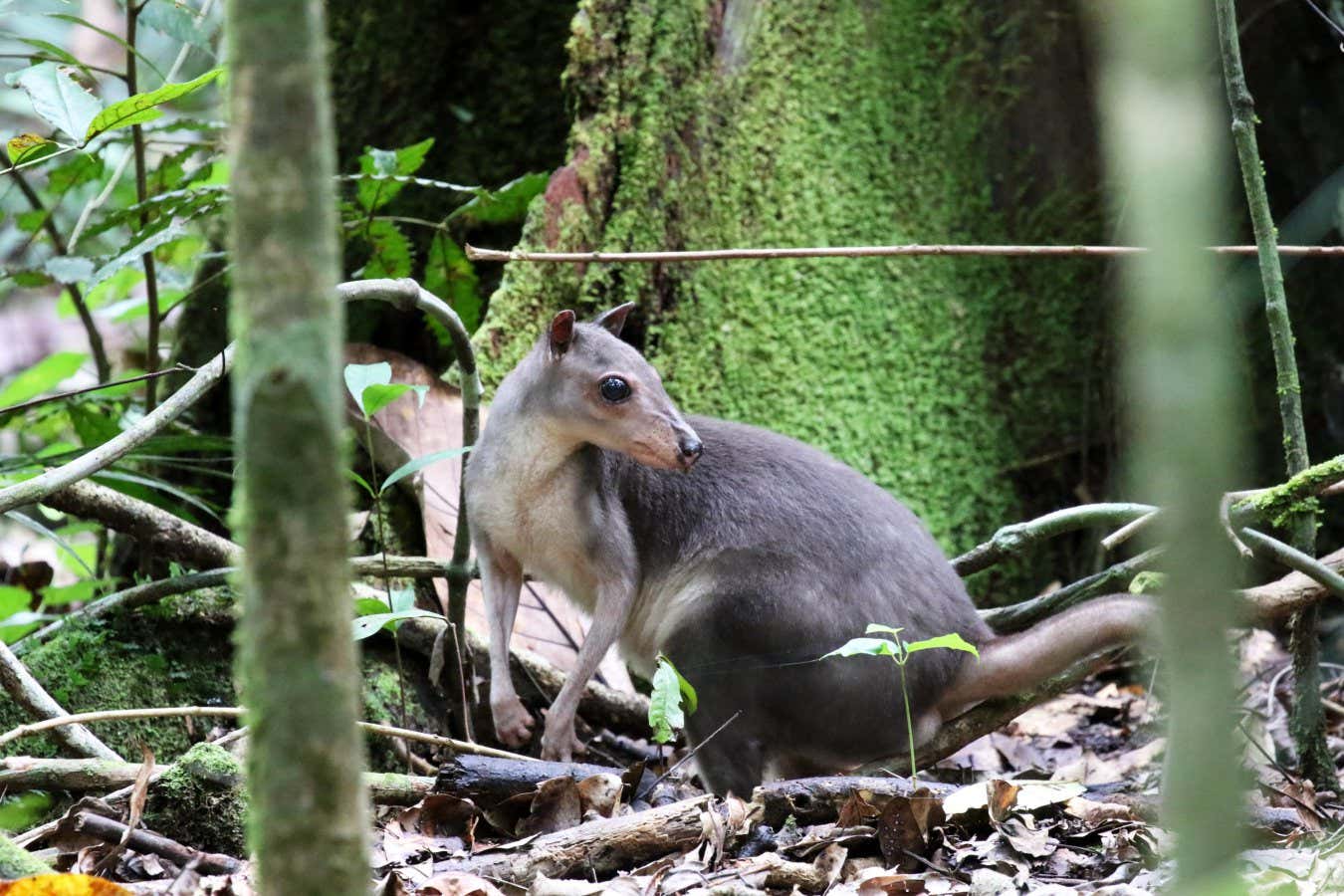Humans established a wild population of brown forest wallabies in the Raja Ampat Islands thousands of years ago for their meat and fur in one of the earliest known species translocations
By Christa Lesté-Lasserre
24 June 2025
Brown forest wallabies spread to several islands thousands of years ago
Mehd Halaouate, Birdingindonesia.com
As early as 12,800 years ago, people captured wild wallabies and transported them in canoes to islands dozens or even hundreds of kilometres away.
Native to Sahul – the prehistoric landmass that later split into Australia and New Guinea – the marsupials probably accompanied human explorers and traders to islands across South-East Asia as sources of food, decorative pelts and eventually bone tools. The imported animals established colonies and thrived there for thousands of years, in one of the world’s oldest known cases of animal translocation, says Dylan Gaffney at the University of Oxford.
Read more
Vast submerged area near Australia may once have hosted 500,000 people
“This builds into a global picture where these early people were moving, managing and rearing animals in much more complicated and purposeful ways than we thought – possibly in some ways that early agriculturalists would have,” he says. “They weren’t just surviving in these tropical island environments; they were actively shaping them.”
Scientific work on species translocations has typically focused on European explorers – like their introduction of invasive rabbits into Australia in the 18th and 19th centuries, or the reintroduction of horses to the Americas in the late 1400s and early 1500s.
But in the 1990s, researchers found bones of two kinds of marsupials – the cuscus and the bandicoot – on islands east of New Guinea, and brown forest wallabies on islands as far west as Halmahera, about 350 kilometres away from the ancient coastline of Sahul.
